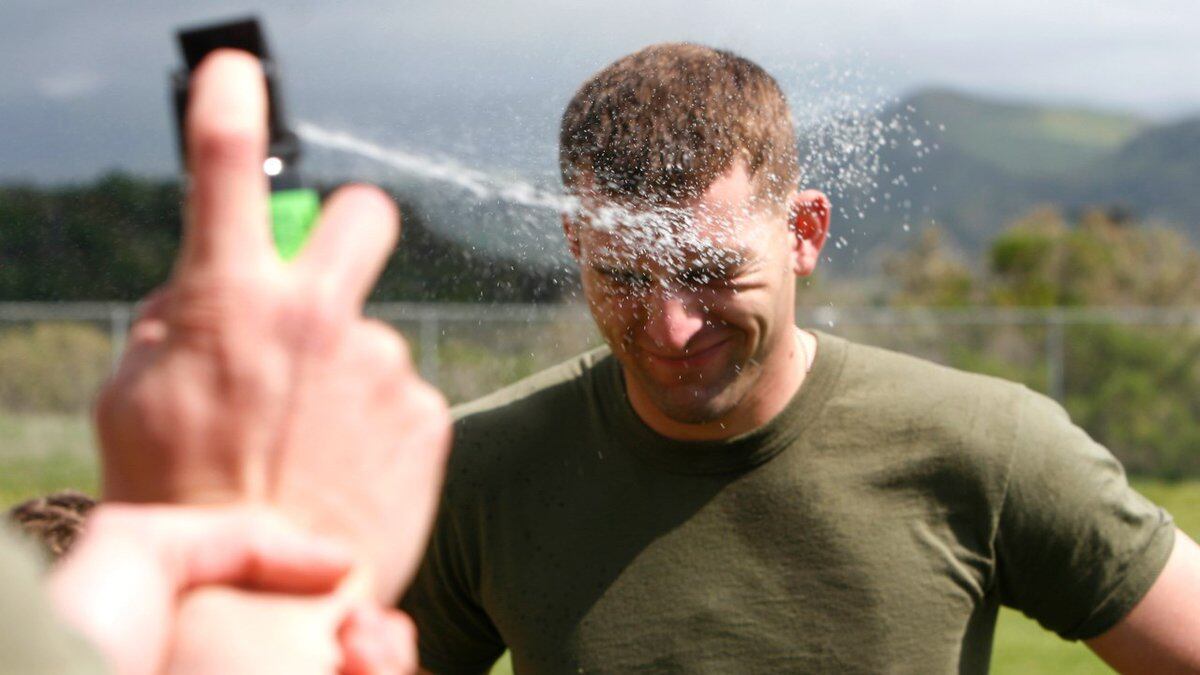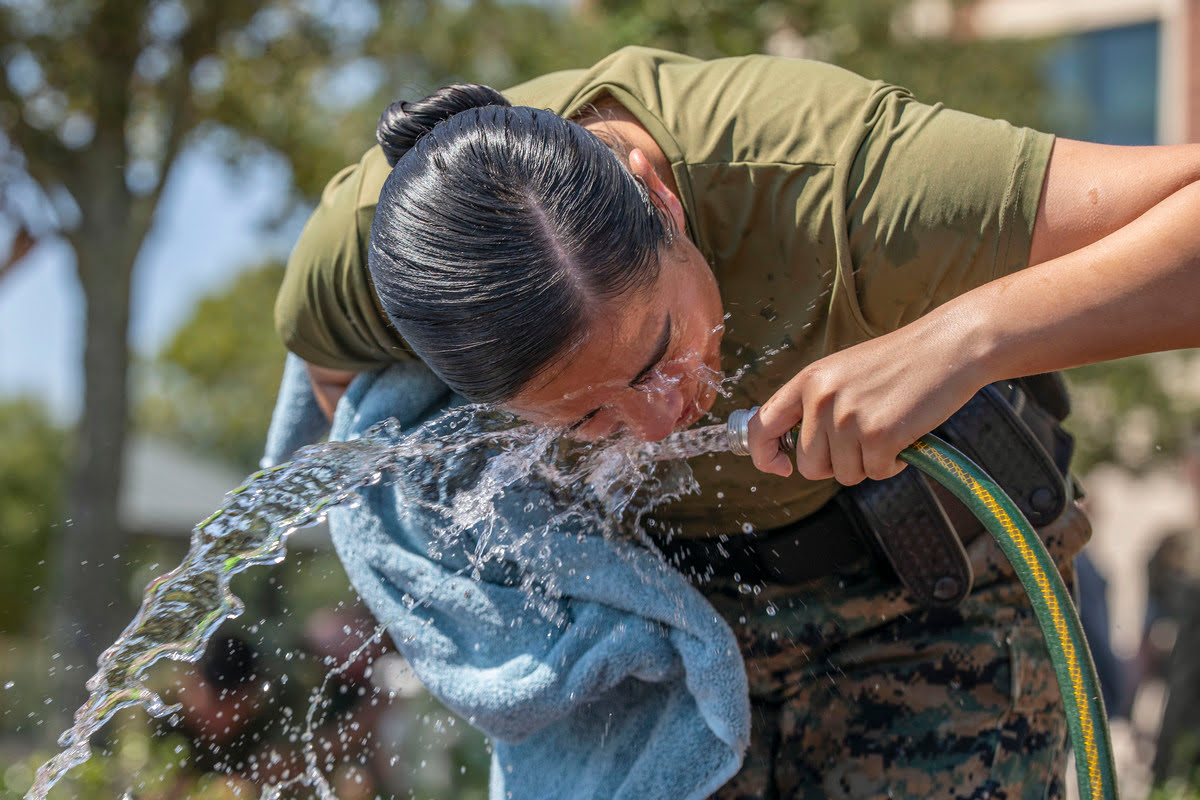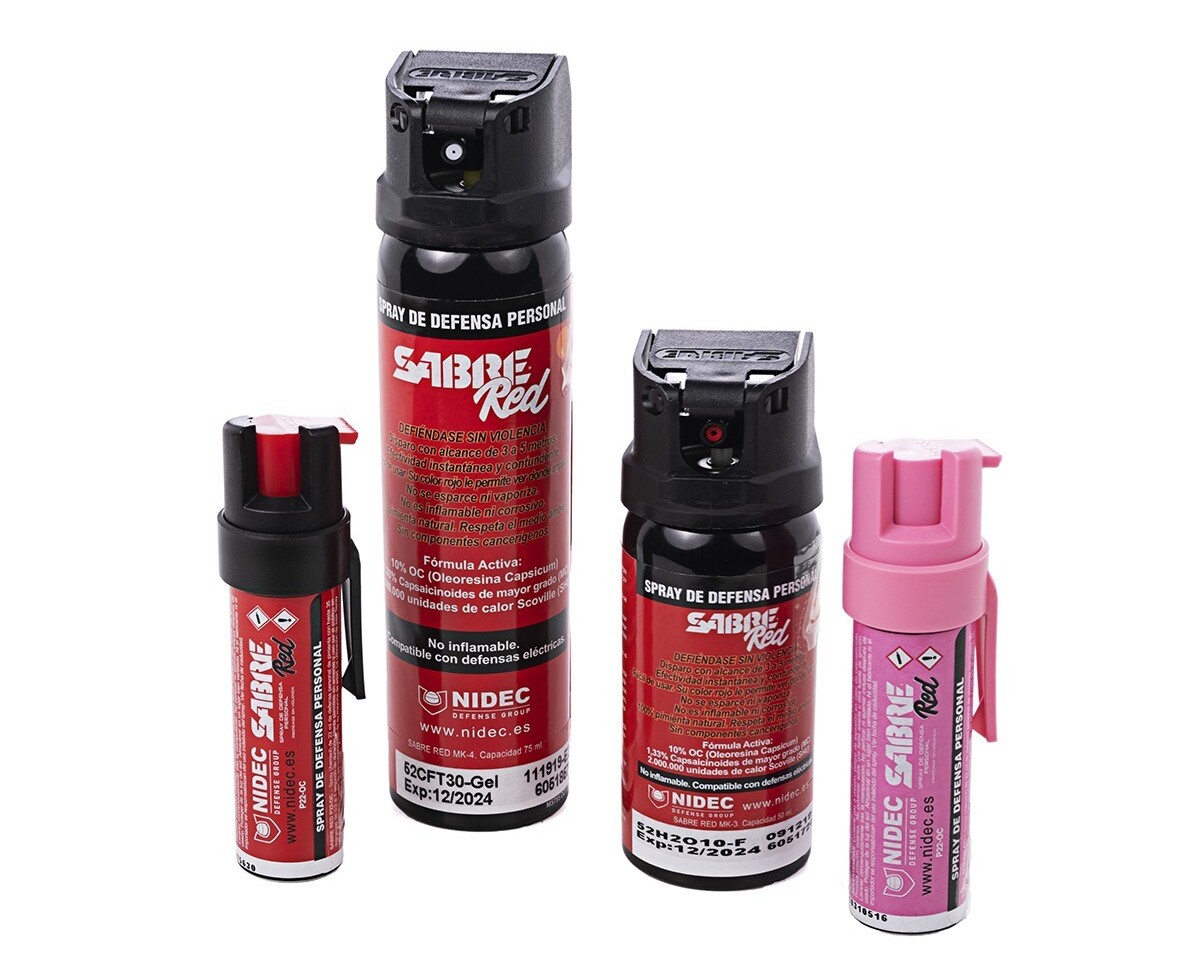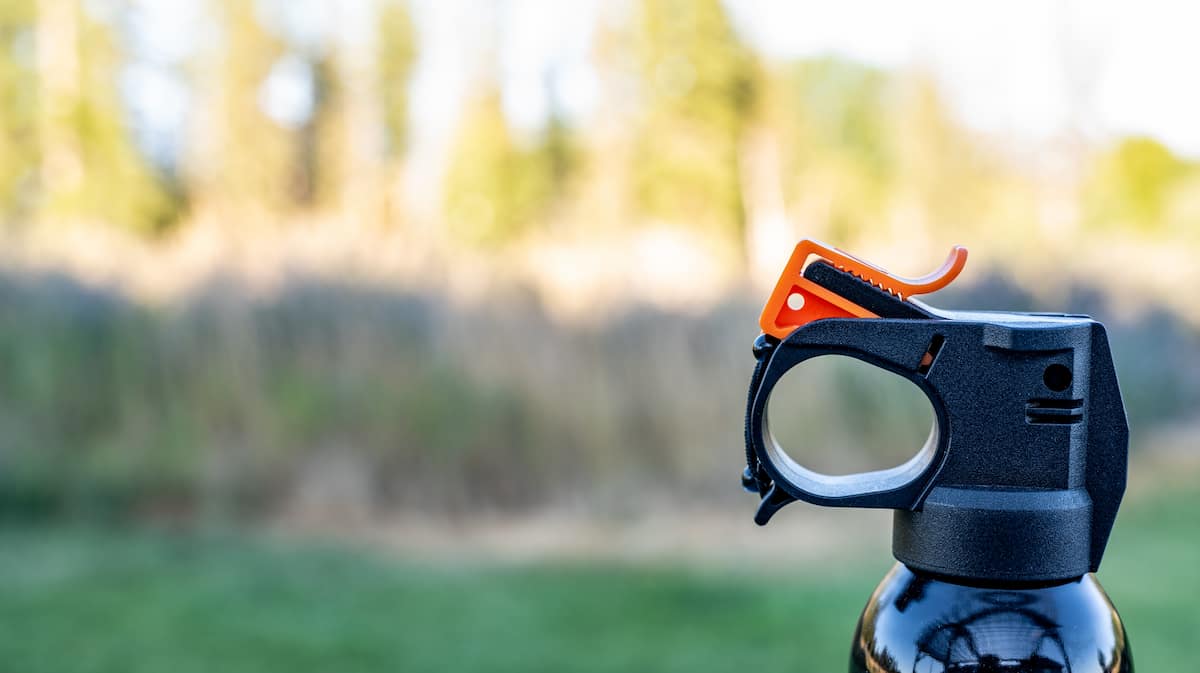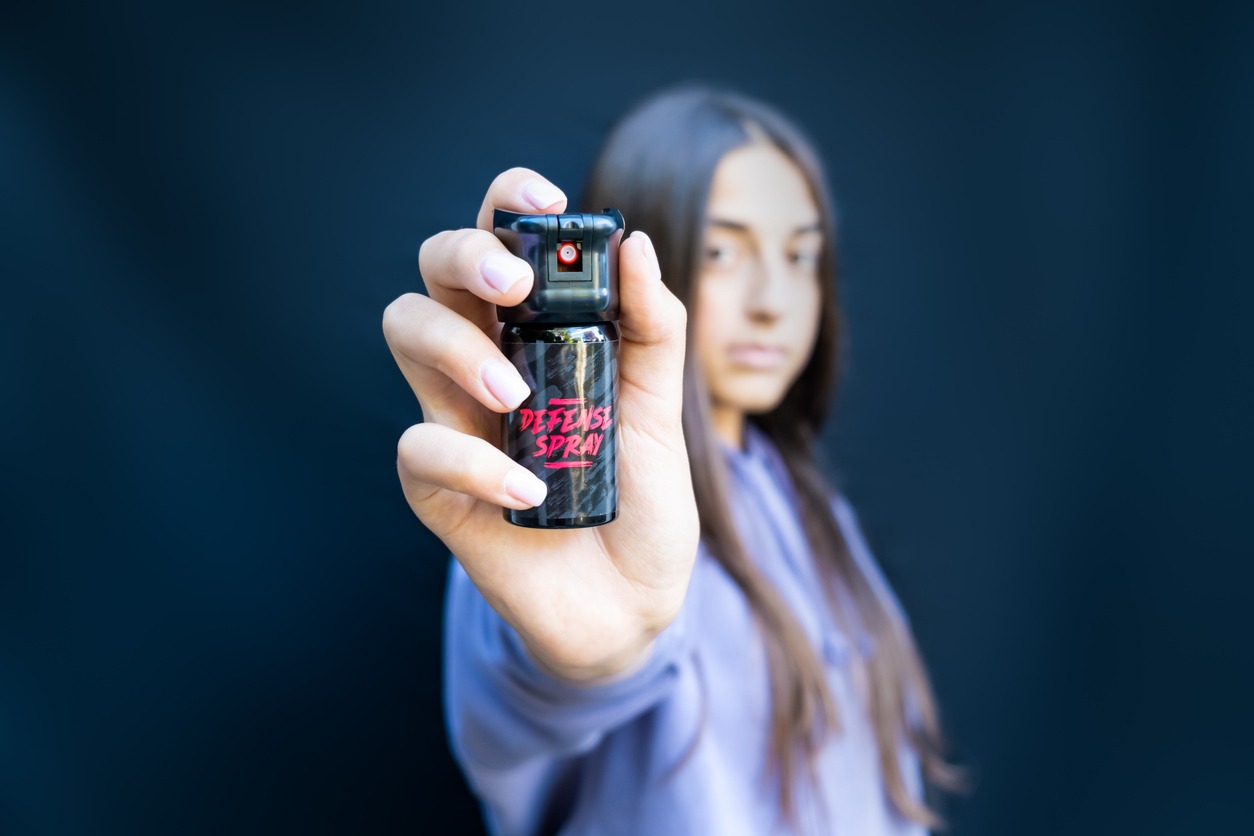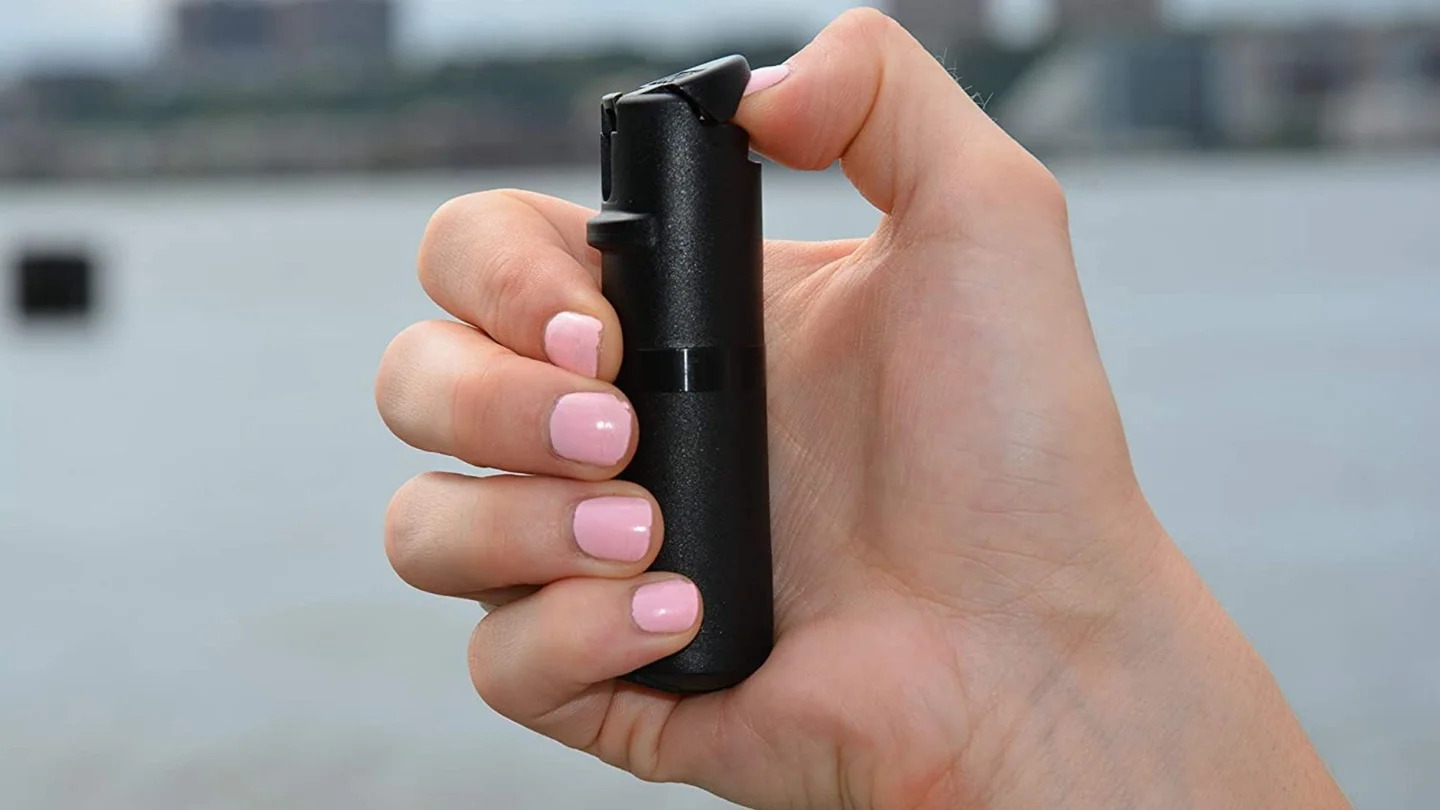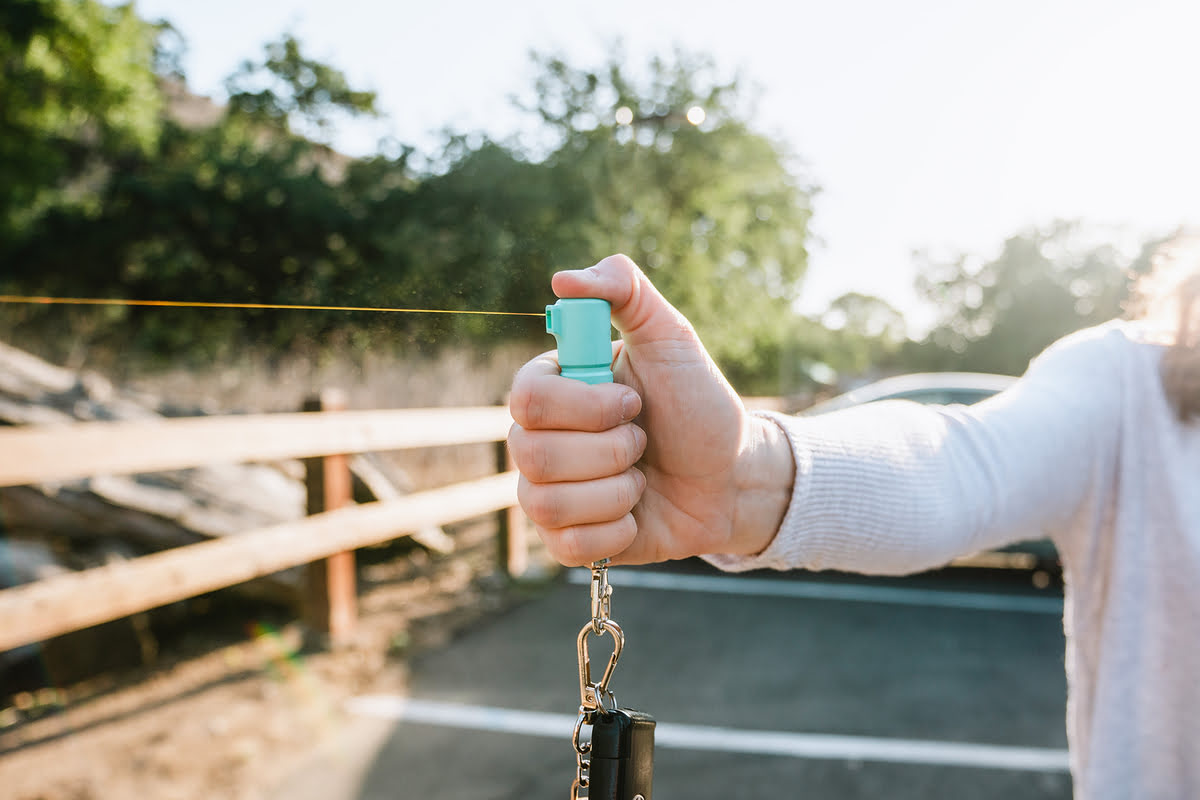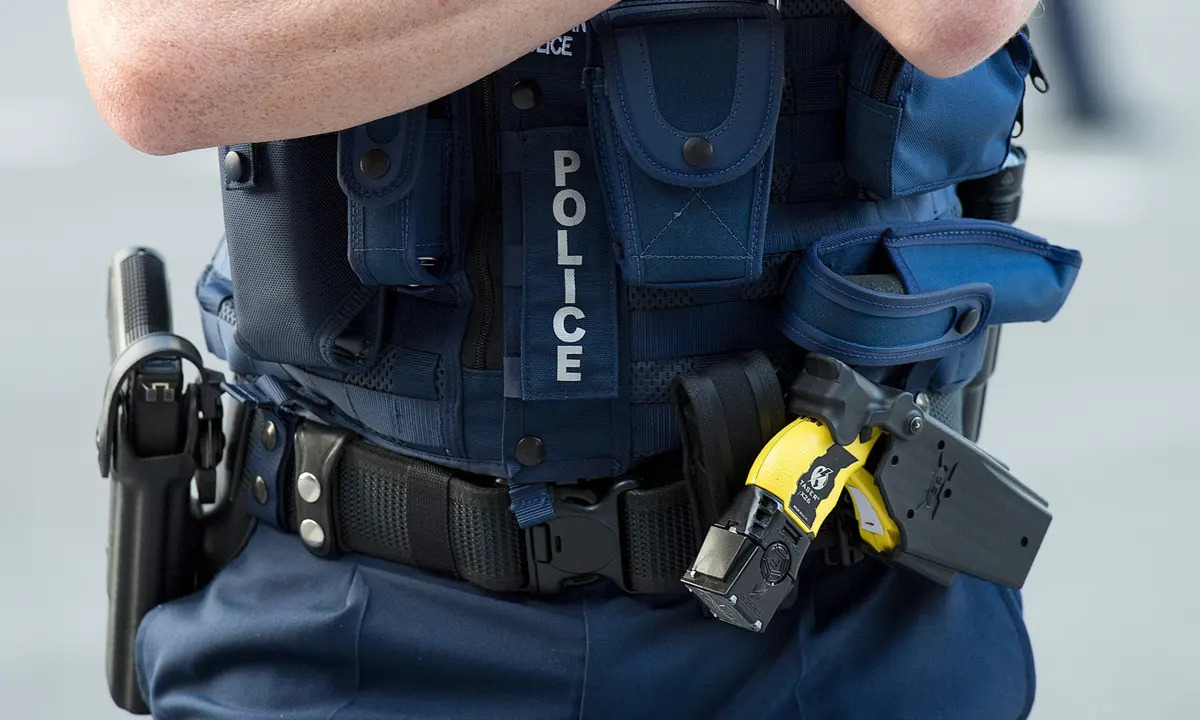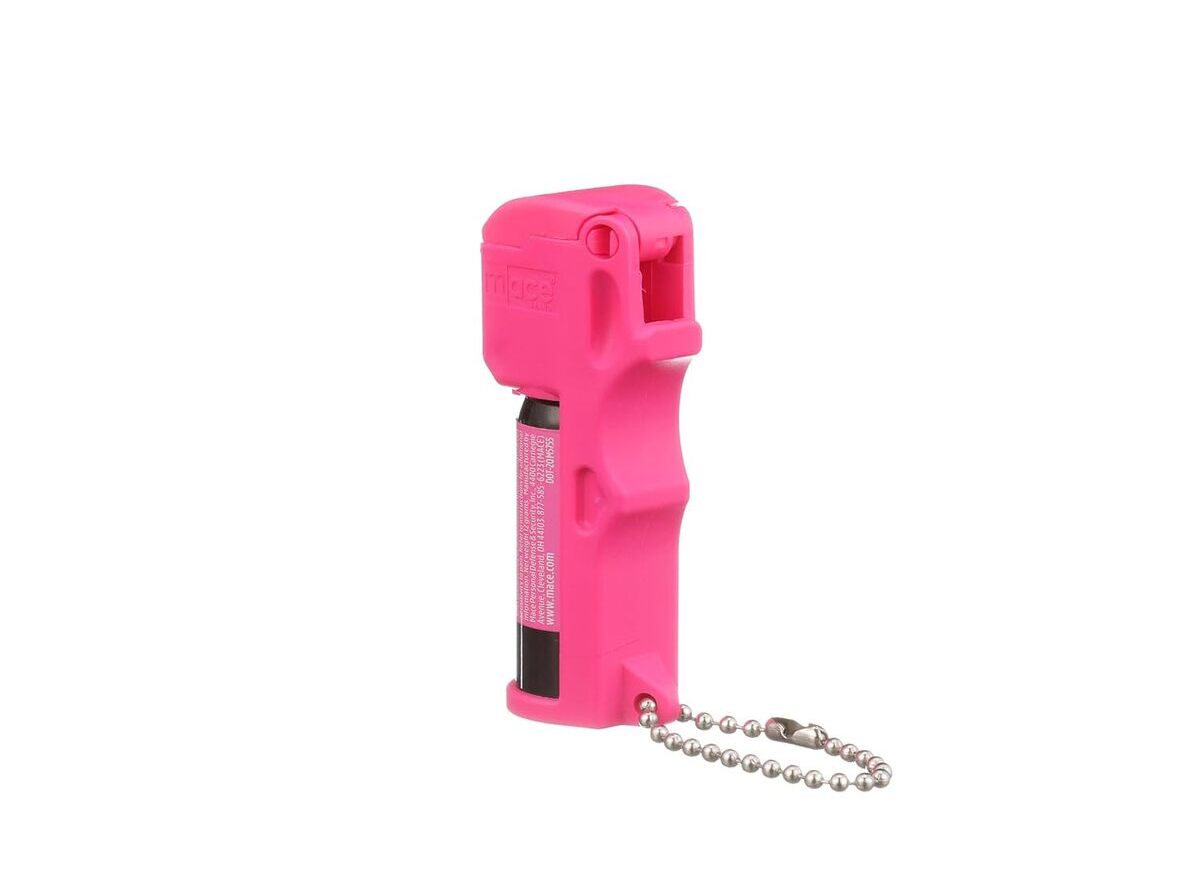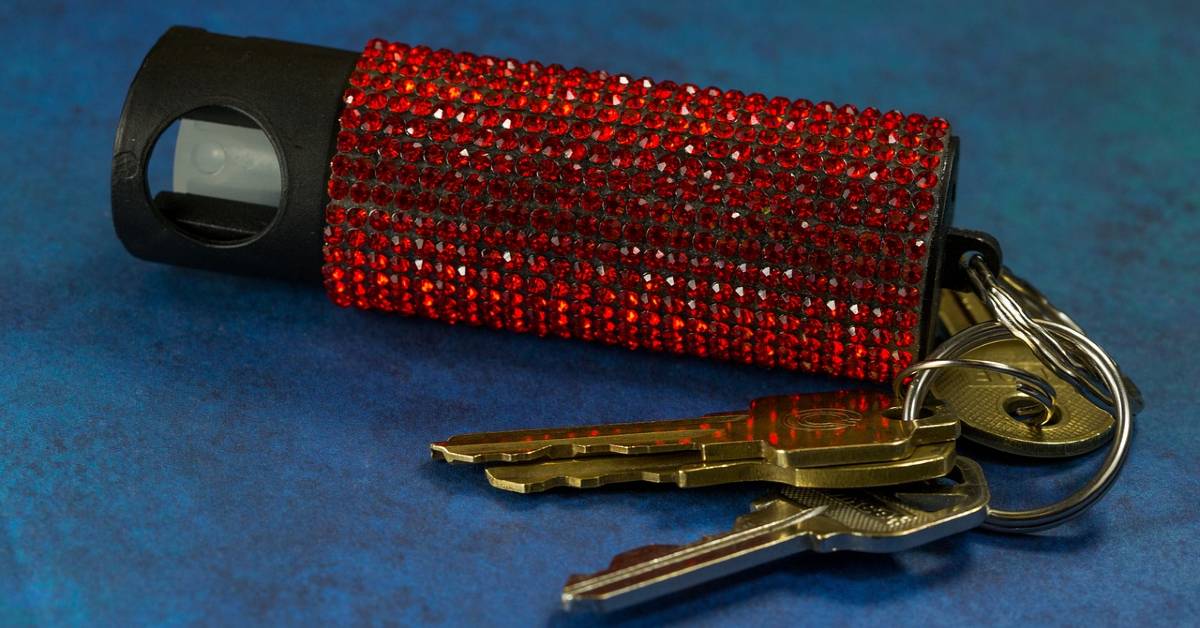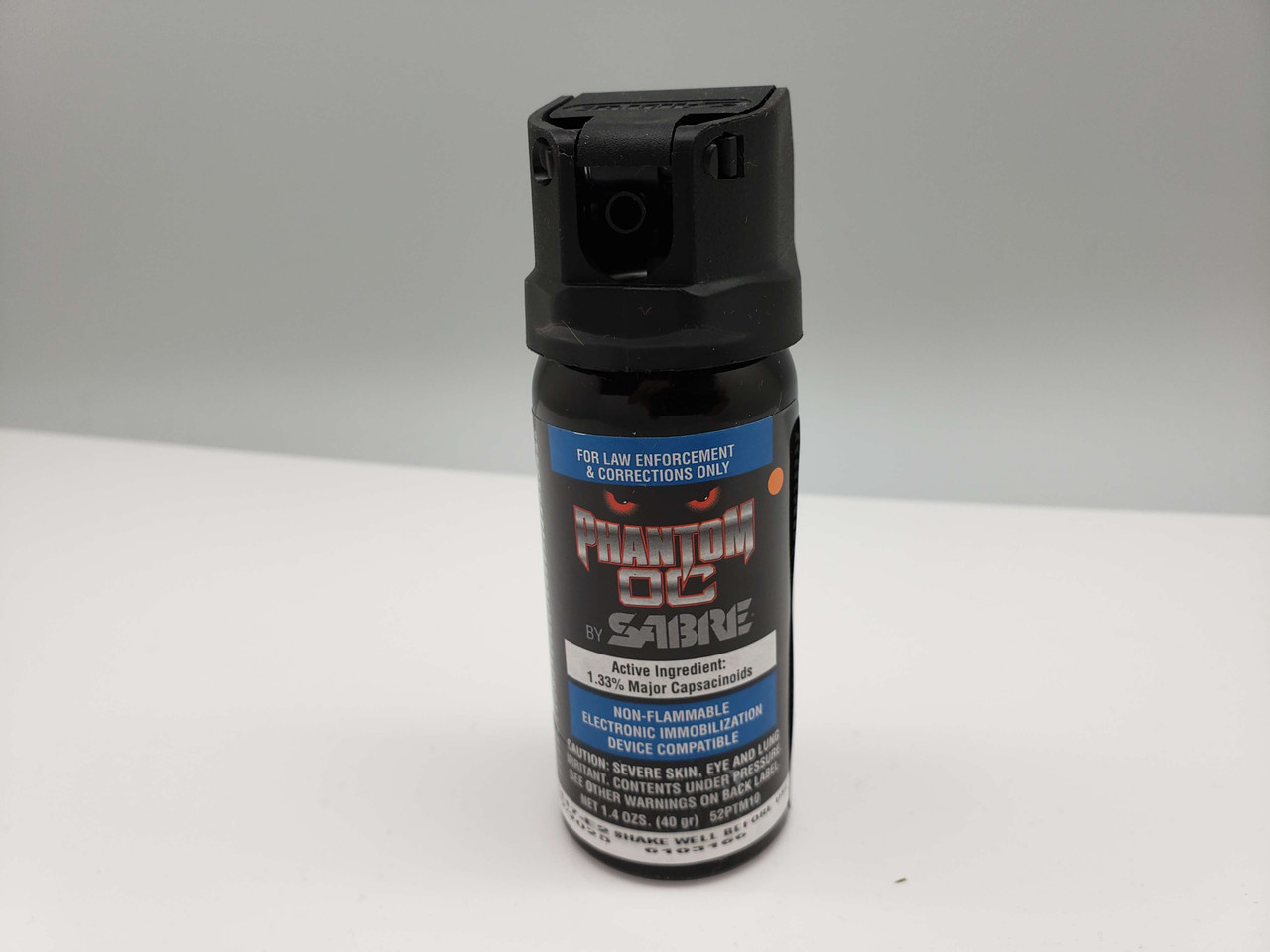Home>Home Security and Surveillance>What Is Pepper Spray


Home Security and Surveillance
What Is Pepper Spray
Modified: August 17, 2024
Looking for home security and surveillance solutions? Learn more about pepper spray and its effectiveness in protecting your loved ones.
(Many of the links in this article redirect to a specific reviewed product. Your purchase of these products through affiliate links helps to generate commission for Storables.com, at no extra cost. Learn more)
Introduction
Feeling safe and secure in our homes is a top priority for most people. That’s where home security and surveillance systems come into play. With the advancements in technology, there are now a plethora of options available to protect our homes and loved ones. One popular tool in the home security arsenal is pepper spray, a non-lethal self-defense option that has gained popularity due to its effectiveness and ease of use.
In this article, we will delve into the world of pepper spray, exploring its history, chemical composition, how it works, and its effects on the body. We will also discuss proper usage, safety considerations, legal aspects, and explore alternative options to pepper spray.
Join us on this journey as we uncover the ins and outs of pepper spray, empowering you with the knowledge to make informed decisions when it comes to your home security and personal safety.
Key Takeaways:
- Pepper spray, made from hot peppers, is a popular non-lethal self-defense tool. It causes temporary blindness and difficulty breathing, making it effective for escaping threatening situations.
- Proper usage and legal considerations are crucial for using pepper spray responsibly. Alternative options like personal alarms and self-defense classes provide additional layers of protection for home security and personal safety.
Read more: What Is The Hottest Pepper Spray
History of Pepper Spray
Pepper spray, also known as OC spray, short for oleoresin capsicum spray, has a fascinating history dating back centuries. While the use of chili peppers for self-defense can be traced to ancient civilizations, the modern concept of pepper spray as we know it today originated in the 1960s.
The development of pepper spray can be attributed to the efforts of the Federal Bureau of Investigation (FBI), who were seeking a non-lethal alternative to conventional weapons. The FBI collaborated with the U.S. Army to create a formulation using oleoresin capsicum, derived from hot peppers, as the active ingredient.
It wasn’t until the 1980s that pepper spray gained widespread recognition and use in law enforcement and personal self-defense. The advent of compact, handheld canisters made it accessible to the general public, empowering individuals to protect themselves.
Today, pepper spray is not only utilized by civilians but also employed by law enforcement agencies around the world. Its effectiveness and non-lethal nature have made it an indispensable tool for personal safety and crime prevention.
Chemical Composition of Pepper Spray
Pepper spray is comprised of a mixture of chemicals that work together to create its potent effects. The active ingredient in pepper spray is oleoresin capsicum (OC), which is derived from the resin of hot peppers such as cayenne, jalapeno, or habanero peppers.
OC contains a compound called capsaicin, which is responsible for the burning sensation and irritation experienced when exposed to pepper spray. Capsaicin is a naturally occurring compound found in the placental tissue of chili peppers.
Aside from capsaicin, pepper spray formulations may also contain other ingredients such as propylene glycol, a solvent that helps disperse the OC, and a propellant, such as nitrogen or carbon dioxide, to facilitate the spray’s deployment.
It is important to note that pepper spray is available in various strengths or concentrations, typically measured in Scoville Heat Units (SHU). The higher the SHU, the hotter and more potent the spray is.
Pepper spray manufacturers often indicate the percentage of OC on the packaging. For example, a product labeled as 5% OC means it contains 5% oleoresin capsicum by weight.
It’s worth noting that not all pepper sprays are created equal. Some formulations may include additional additives or chemicals to enhance the effectiveness or extend the shelf life of the product. It is crucial to choose a reputable brand and read the product label carefully to understand its composition.
Now that we understand the chemical composition of pepper spray, let’s explore how it works to incapacitate potential threats.
How Pepper Spray Works
Pepper spray, when deployed, works by causing intense irritation and inflammation of the mucous membranes and sensory nerve endings in the eyes, nose, throat, and skin of the assailant. This incapacitates the individual temporarily, allowing the victim to escape or seek help.
When sprayed, the capsaicin in pepper spray interacts with the pain receptors in the body, triggering a response from the nervous system. This results in an immediate and intense burning sensation, swelling of the eyes, involuntary closure of the eyes, difficulty breathing, and coughing.
The effects of pepper spray are primarily due to its ability to dilate blood vessels in the mucous membranes, causing increased blood flow and inflammation. The inflammatory response causes temporary blindness, making it difficult for the assailant to see and effectively carry out any further aggression.
In addition to the immediate effects, pepper spray can also cause a strong burning sensation on the skin and in the respiratory system. This can incapacitate the assailant further, causing disorientation and severely impairing their ability to continue the attack.
The effects of pepper spray are generally short-lived, lasting anywhere from 30 minutes to an hour. However, the exact duration can vary depending on the concentration of the spray, the duration of exposure, and the individual’s tolerance to the effects.
It is important to note that while pepper spray is effective in disabling an attacker temporarily, it should not be considered a foolproof solution. It is always advisable to use pepper spray as a means of escape and seek help from law enforcement authorities when facing a threatening situation.
Now that we understand how pepper spray works, let’s explore the effects it has on the body in more detail.
Effects of Pepper Spray on the Body
Pepper spray is designed to incapacitate and deter potential threats by causing a series of physiological reactions in the body. Let’s take a closer look at the effects it has on different parts of the body:
- Eyes: When sprayed directly into the eyes, pepper spray causes intense burning, itching, and temporary blindness. The capsaicin in pepper spray irritates the sensitive tissues of the eyes, leading to uncontrollable tearing, swelling, and temporary loss of vision. The individual may also experience blurred vision and difficulty opening their eyes.
- Respiratory System: Inhalation of pepper spray can lead to severe coughing, wheezing, and difficulty breathing. The inflammatory response triggered by the capsaicin can cause the airways to constrict, resulting in respiratory distress. The victim may experience shortness of breath, difficulty speaking, and a feeling of suffocation.
- Skin: When pepper spray comes into contact with the skin, it can cause a burning sensation, irritation, redness, and swelling. The affected area may feel hot to the touch and may develop a rash or blisters in severe cases.
- Nose and Throat: Inhalation of pepper spray can irritate the nasal passages and throat, causing intense discomfort, sneezing, and gagging. The individual may experience a runny or blocked nose, excessive mucus production, and a sensation of a burning or scratchy throat.
- Psychological Impact: In addition to the physical effects, pepper spray can also cause psychological distress and anxiety. The sudden and intense pain, temporary blindness, and difficulty breathing can create a highly stressful and disorienting situation for the victim.
It is important to note that the effects of pepper spray can vary from person to person, depending on factors such as individual tolerance, concentration of the spray, duration of exposure, and proximity of the spray to sensitive areas.
If exposed to pepper spray, it is crucial to seek immediate medical attention and follow proper decontamination procedures to minimize the effects and promote healing.
Now that we understand the effects of pepper spray, let’s move on to discussing the proper usage of this self-defense tool.
When using pepper spray, aim for the attacker’s face and spray in short bursts. Then, quickly move away to a safe location.
Read more: What To Do When Sprayed With Pepper Spray
Proper Usage of Pepper Spray
Using pepper spray correctly is essential to ensure its effectiveness and protect yourself in a threatening situation. Here are some guidelines for the proper usage of pepper spray:
- Familiarize yourself with the product: Before carrying pepper spray, read the instructions and become familiar with its features and operation. Understand how to activate the spray, aim, and test it periodically to ensure it is in proper working condition.
- Keep it accessible: When carrying pepper spray, ensure it is easily accessible and within reach. This could be in a pocket, a holster, or attached to a keychain. The quicker you can access it, the better equipped you will be to respond in a threatening situation.
- Aim for the face: When using pepper spray, aim for the attacker’s face, specifically their eyes and nose. This maximizes the chances of temporarily disabling them and creating an opportunity for you to escape. Remember to keep a safe distance, typically around 6-10 feet, to maintain your own safety.
- Use short bursts: Dispense pepper spray in short bursts rather than one continuous stream. This helps ensure accuracy and conserves the spray for multiple use if necessary. Aim to cover the attacker’s face with the spray to increase the chances of incapacitating them.
- Move and escape: After deploying pepper spray, immediately move away from the assailant. This allows you to create distance, reducing the risk of further harm. Head towards a safe area and seek assistance from law enforcement, security personnel, or trusted individuals nearby.
- Practice self-defense techniques: While pepper spray can be an effective self-defense tool, it should not be relied upon as the sole means of protection. Consider taking self-defense classes or learning basic techniques to complement your use of pepper spray. Confidence and knowledge in self-defense can greatly enhance your personal safety.
Remember, the goal of using pepper spray is to incapacitate the attacker temporarily and create an opportunity to escape. It is crucial to always prioritize your safety and use pepper spray responsibly.
Next, we will discuss important safety and legal considerations when it comes to pepper spray.
Safety and Legal Considerations
While pepper spray can be an effective self-defense tool, it is important to understand and adhere to safety guidelines and legal regulations to ensure responsible usage. Here are some safety and legal considerations when it comes to pepper spray:
- Know the laws: Familiarize yourself with your local laws regarding the possession, purchase, and use of pepper spray. Laws can vary from one jurisdiction to another, so it is crucial to understand the specific regulations in your area.
- Use responsibly: Pepper spray should only be used in self-defense situations where there is a credible threat to your safety or the safety of others. Using pepper spray in a non-threatening or non-defensive manner can result in legal consequences.
- Follow proper decontamination procedures: If you accidentally expose yourself or others to pepper spray, it is important to follow proper decontamination procedures. Flush affected areas with cool water, avoid rubbing the eyes, and seek medical attention if necessary.
- Store it safely: When not in use, store your pepper spray in a safe and secure location away from children or unauthorized individuals. Ensure it is not exposed to extreme temperatures or direct sunlight, as this can compromise its effectiveness.
- Practice caution: Pepper spray should only be used as a last resort when all other options for de-escalation and escape have been exhausted. It is important to assess the situation, evaluate the level of threat, and use pepper spray responsibly and proportionately.
- Consider training and education: While formal training is not required to use pepper spray, consider attending self-defense classes or seeking instruction on proper usage. Training can provide valuable insights, techniques, and confidence in handling self-defense situations.
- Check expiration dates: Pepper spray can expire over time, losing its effectiveness. Check the expiration date on your pepper spray canister regularly, and replace it before it expires to ensure it functions properly when needed.
Remember, the goal of using pepper spray is to protect yourself and others from potential harm. By understanding the safety and legal considerations, you can use pepper spray responsibly and effectively in self-defense situations.
Now, let’s explore some alternative options to pepper spray for home security and personal safety.
Alternatives to Pepper Spray
While pepper spray is a popular choice for self-defense, it may not be suitable for everyone or every situation. If you are looking for alternative options for home security and personal safety, here are a few worth considering:
- Personal Alarms: Personal alarms are compact devices that emit a loud, attention-grabbing sound when activated. They are easy to carry and can deter potential attackers and draw attention in case of an emergency.
- Stun Guns: Stun guns deliver an electric shock to immobilize an attacker. They are available in various sizes and designs, some even disguised as everyday objects. Stun guns require close contact to be effective and should be used with caution.
- Self-Defense Classes: Learning self-defense techniques through classes or workshops can empower you with the skills to protect yourself. These classes teach you how to use your body effectively in dangerous situations and may boost your confidence in handling potential threats.
- Home Security Systems: Investing in a comprehensive home security system can provide peace of mind. These systems typically include alarms, surveillance cameras, motion sensors, and 24/7 monitoring services to protect your home and alert authorities in case of a break-in.
- Security Apps: There are various smartphone apps designed for personal safety that can alert emergency contacts or authorities when activated. Some apps also offer features like GPS tracking and virtual escorts for added security.
- Whistles: Whistles are simple, low-cost devices that produce a loud, piercing sound when blown. They can attract attention and potentially intimidate an assailant, giving you a chance to escape or seek help.
- Safety Escorts: In some communities, there are organizations that offer safety escort services. They provide trained volunteers who can accompany you when walking alone at night or in unfamiliar areas.
Remember, the effectiveness of any self-defense tool or technique depends on various factors, such as your comfort level, the specific situation, and local laws and regulations.
Ultimately, it is up to you to choose the methods that best suit your needs and preferences. Considering a combination of options can provide a layered approach to your personal safety.
After exploring these alternatives, we can conclude our discussion on pepper spray and the various options available for home security and personal safety.
Conclusion
When it comes to home security and personal safety, pepper spray has established itself as a popular and effective self-defense tool. Its history, chemical composition, and the way it works to incapacitate attackers make it a valuable asset in threatening situations.
However, it is crucial to understand that pepper spray is not a foolproof solution and should be used responsibly. Familiarizing yourself with its proper usage, adhering to safety guidelines, and being aware of legal considerations are essential to ensure effective and responsible use.
In addition to pepper spray, there are alternative options available for home security and personal safety. Personal alarms, stun guns, self-defense classes, home security systems, and smartphone apps are just a few of the choices that can complement or serve as alternatives to pepper spray.
Ultimately, the choice of self-defense tools and techniques should be based on individual comfort, specific situations, and local laws. It is important to prioritize personal safety and take proactive measures to protect yourself and your loved ones.
By staying informed, practicing situational awareness, and investing in appropriate security measures, you can create a safe and secure environment in your home and in your everyday life.
Remember, preparation is key, and knowledge is your greatest asset. Stay safe, stay informed, and empower yourself to confidently navigate any potential threats that may arise.
Frequently Asked Questions about What Is Pepper Spray
Was this page helpful?
At Storables.com, we guarantee accurate and reliable information. Our content, validated by Expert Board Contributors, is crafted following stringent Editorial Policies. We're committed to providing you with well-researched, expert-backed insights for all your informational needs.
